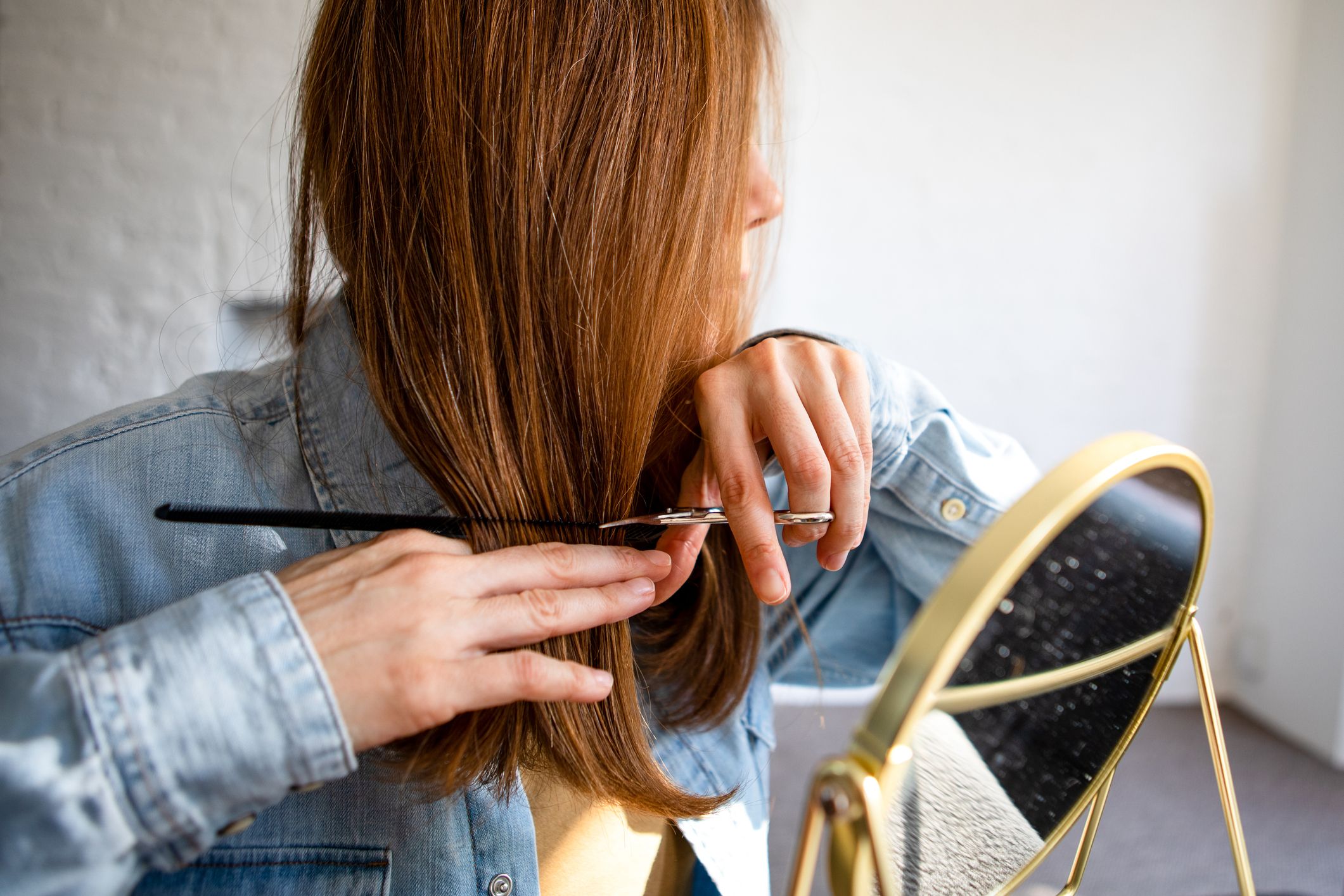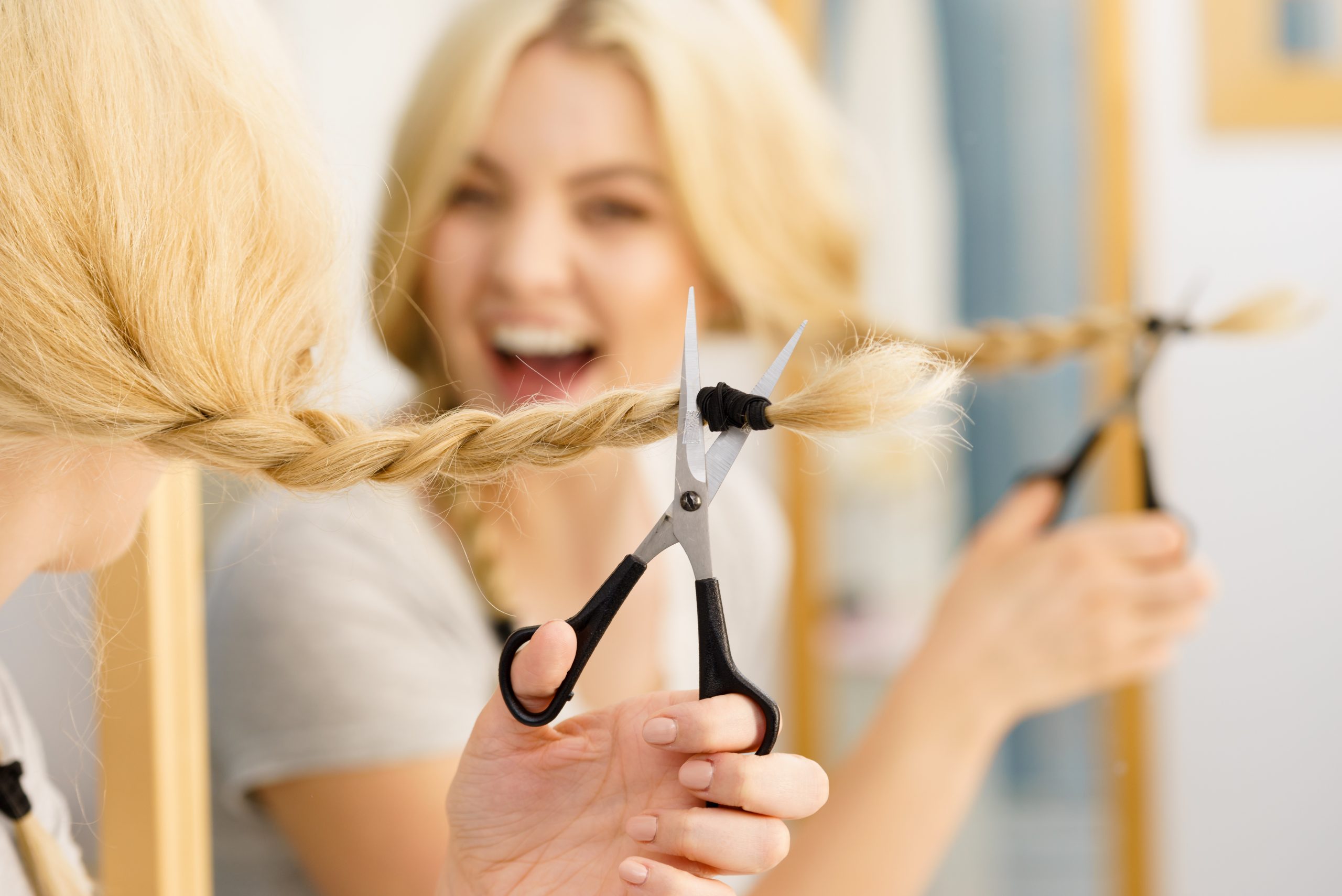Table of Content
Insert the traveling guide and the next segment of hair between your forefinger and middle finger. Move the fingers towards the ends—pulling the hair at a 90° angle—until you reach the end of the traveling guide. Cut the new segment of hair so that it is the same length as the traveling guide. Cut the right bottom portion so that it’s even with the rest of the cut. With the left and back portions of the hair already cut, continue cutting in a straight line across the right side of the hair using the hair cutting shears or scissors.

After trimming the front section of your hair, remove the clips on your left side, lift the hair section and snip those ends with an angular shape. Then, bring those two sections down to check if both layers are aligned. As you can see, with a few tips and tricks, cutting your own hair may be quite easy if you do not plan extra big changes in your appearance. Trimming split ends or creating layers if often successful, not every short self-haircut done at home will look fabulous, though.
How to trim long layers
Longer layers look gorgeous with round or square faces, while shorter layers accent faces that are oval or heart-shaped. Comb through the right side of hair and separate the bottom portion. Take down the last section of hair and comb it thoroughly so that there aren’t any tangles and you can clearly see the difference in length. Pull the right side's upper section out of the way so that the bottom half of the hair is ready to be cut. Use hair clips to keep each section of hair in place.

Hold the hair in between your fingers and pull each strand down and slightly away from the head. Cut the rest of the back section of hair using the cut hair as a guide to cut the new hair along the same line. An undercut style is by far the easiest haircut to try at home and it can make a huge difference in managing and cutting thick hair. Learning to trim the nape of your head will also be useful if you’re trying to maintain or grow out a pixie cut.
Prep Your Hair
Air-dry your hair, or dry it with a microfiber towel, which is gentler on your hair. Air-drying or gentle towel drying will allow your curls resume their ordinary shape and length. Cutting your hair while it's dry allows you to see immediately what the final cut is going to look like. Furthermore, curls spring up and get shorter as they dry, so you're at risk of cutting your layers too short if you chop them while they're wet. But speaking as a stylist, I can confidently say that cutting your own face-framing layers is easy-to-achieve and can give your haircut a huge boost . Keep reading for our 10-step guide on how to cut the perfect face-framing layers at home.

Fasten it there with a hair elastic, then turn your head right side up. Make sure your hair is smooth against your head; any lumps or tangled parts could result in messy layering. You will have even, natural-looking layers around your head.
The Path Towards a Layered Haircut: How Can You Layer Cut Your Hair at Home?
Fill in your email address to receive the free “5 Easy, Homemade Remedies to Beat Coughs & Colds” printable PDF. If you usually wear your hair parted to one side, then position the ponytail on that side, directly in front of where your part would be. First, thoroughly wash and condition, then comb it all starting from underneath, smoothing everything to the front.
This line is just for creating a triangle-shaped section of hair. If the hair is long enough, pull the sections to the front of the shoulders so they’re not in the way. You won’t love having hair strands sticking on your skin and clothes after your haircut.
When you flip your head back over, you'll see that this maintains the length but adds a few flattering layers. Pay careful attention to which sections of hair have been cut and which still need to be cut. When you're working with short hair, cutting the same section twice can make a big difference. Plan to cut your hair in a well-lit bathroom with at least two mirrors, so you can check your progress often and see the back of your head as well. This method creates a few face-framing layers in the front with longer layers in the back. If you'd like to adjust the length of your layers, use the scissors to carefully cut individual locks of hair.

Make sure that your shears are also sharp enough to cut through your hair. If you have very curly hair, try a DIY Deva Cut, another technique that requires dry natural hair. Instead of brushing out your hair, just separate the curls with your fingers.
Use a sharp scissors to trim the tips of the hair extending from between your fingers. Let the hair fall, then use the comb to lift another section of hair in the section of hair that is immediately behind the front section. Then comb a bit of the hair from the first section into this new section. This will serve as a guide for the correct length. This style is layered with bangs, but you can also just trim the ends of your hair using the same technique.
Gather a small segment of hair at the front left side and the front right side. Insert the two segments between your middle and forefinger and pull them forward at a 90° angle. Stop your fingers at the end of the left segment.
It's important to regularly cut off dead or damaged hair to keep your overall hair looking and growing healthy. Trim it more often if you're treating your hair with chemicals or if you regularly expose your hair to heat. Once you've separated out each section, secure the hair with a clip to keep it in place. Sky Kim is a hairstylist with over a decade of experience. She currently works at Serge Normant at John Frieda in New York City. With his or her back to you, have him or her look down to the bellybutton and cut the center section straight across.

Always start with the front and then blend in the back. For visual learners, it might help to watch a few YouTube tutorials before beginning. According to PopSugar, "choppy layers" are back in style for 2021, so it makes sense that you would want to hop on this trend for a new 'do in the new year.
Undo the clip keeping the section in place and stretch it up vertically, perpendicular to the floor. You can also pull it out slightly at an angle away from your head. Use multiple cuts to get all the way through the section.


No comments:
Post a Comment